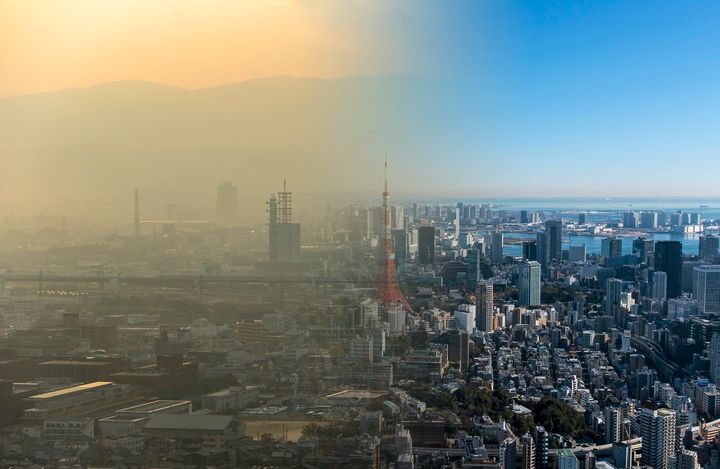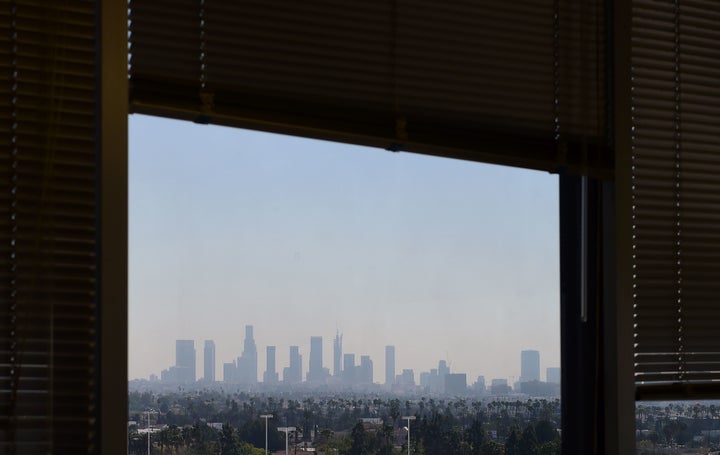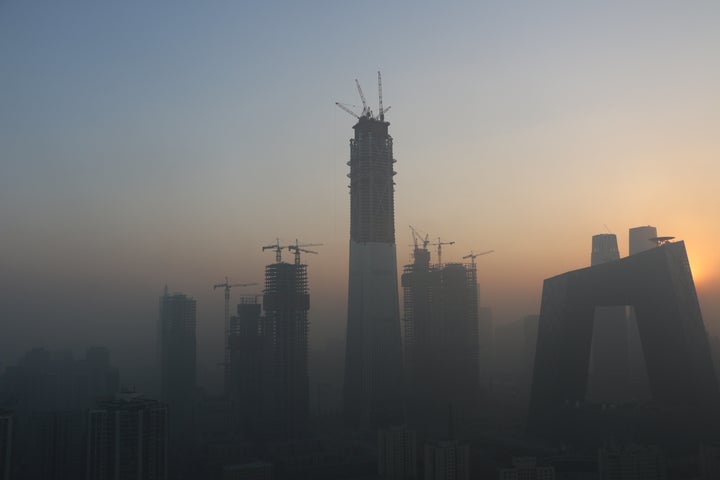
When a city’s air is dirty, it threatens residents’ health and economic security. This problem is worsening across the globe, and air quality experts say cities owe it to their people to take action.
Some of the most polluted urban areas ― including Los Angeles and Beijing ― recognize these dangers and have taken steps to purge their skies of pollution. Though their problems are far from solved, their multipronged strategies can serve as a model for other cities.
“Most cities would have healthier populations if their air was cleaner,” said Suzanne Paulson, a professor and director of the Center for Clean Air at UCLA.
More than 6.5 million people died prematurely in 2015 from air pollution-related illnesses, according to an extensive new study. That’s three times higher than those killed by HIV/AIDS, malaria and tuberculosis combined.
The report, written by more than 40 international environmental and health experts, found that 92 percent of pollution-related deaths (including air, water and workplace pollution) occurred in industrializing countries such as China and India.
The authors argue that tackling air pollution should be a priority of cities and countries across the globe. They point out that laws and regulations passed in high- and middle-income countries have gone a long way toward combating some of the most visible pollution problems.
Cities can start by curbing emissions from both stationary and non-stationary sources. The first category includes emitters like factories and other kinds of industrial infrastructure. The second refers to transportation ― cars, ships and trains ― and it’s the harder one to address, said Ed Avol, a respiratory health and air pollution expert and a professor at the Keck School of Medicine at the University of Southern California.
“Trying to do something at the source is easier ― you can put a solution on a stack of chimneys,” noted Avol, “but it’s much more of a challenge to do that on 10 million vehicles.”
Some cities are employing creative, sometimes wacky, strategies. In Shijiazhuang, a city in the north of China, kids in elementary school are taught “anti-smog martial arts” in an effort to strengthen their lung power to cope with air pollution. In Germany, the city of Stuttgart is building a giant wall covered with moss, which attracts pollutants and converts them into the plant’s own biomass.
But it’s going to take more than quirky art installations to truly make an impact, said Avol.
“Very few of these have been demonstrated to work on scale in the region,” he said, “but they make us think about what we might do and how we can change our behavior.”
Air pollution can also travel thousands of miles from its source. But cities don’t always have the regulatory authority to impose restrictions on pollutants that might be coming from outside city limits or across state or federal borders. A city’s location can also put it at a disadvantage.
“Some locations have really lousy geography that makes controlling pollution in their area very challenging,” said Paulson.
For example, cities surrounded by mountains ― such as Los Angeles and Mexico City ― are like pollution bowls, trapping dirty air. And extreme weather conditions can also exacerbate bad air conditions. Los Angeles’ recent record drought increased ozone pollution, the main ingredient in smog, to levels not seen in nearly a decade.
Cutting emissions isn’t enough, said Avol. Cities need to step back and wipe the slate clean as they try to imagine what a green future looks like.
A big first step is getting as many people as possible out of their cars and onto public transport, which means improving mass transit systems across the board. This, in turn, means re-thinking urban planning: designing ― or redesigning ― cities in such a way that people live near their places of work, their kids’ schools, grocery stores and parks, eliminating the need to drive everywhere.
Here’s what Los Angeles and Beijing, two of the most prominent offenders, are doing to slash air pollution, and why the rest of the world should pay attention to their efforts.

Los Angeles
Los Angeles is the poster child for a city that has worked hard to dramatically reduce its air pollution levels. Over the past 50 years, most pollution levels are down more than 75 percent compared to their highs, and that’s despite massive population and economic growth, according to Paulson.
“No other city comes close,” she said.
Los Angeles saw tremendous economic development over the past century. But as more people moved in, the city’s blanket of smog grew thicker and thicker. The main culprits were, and still are, vehicle emissions, fumes from industrial plants and the city’s proximity to two of the country’s largest ports.
“When I grew up [in LA], we were restrained from playing outside because the air quality was so bad,” said Avol.
Los Angeles mounted a multipronged attack on the problem, first tackling emissions from the millions of cars on its road. In the 1960s, California was the first state to put laws in place to control noxious emissions from car tailpipes. The passage of the Clean Air Act in 1970, a federal law that set standards for air pollution nationwide, helped further curb emissions.
The city later turned its attention to cutting emissions from the ports of Los Angeles and Long Beach, which still remain the single biggest polluters in Southern California. Over the past decade, the ports have worked to phase out heavy-duty diesel trucks in favor of clean vehicles. It cost the city more than $200 million to buy new trucks, but the initiative worked ― diesel emissions were down 95 percent in 2015.
Now the famously car-reliant city is in the midst of a massive $120 billion bid to overhaul its mass transit system.
Despite its achievements, Los Angeles can’t rest on its laurels just yet. It continues to top the list as the city with the worst ozone pollution in America. And more than 1,300 people die each year in the Los Angeles area from pollution-related illnesses such as lung cancer and stroke ― more than in any other American city.

Beijing
Beijing provides an interesting case study about what’s possible when the central government can exert its power with unfettered authority.
First, in a much publicized pronouncement in 2014, the government declared “war” on the country’s air pollution, which routinely tops international charts for its toxic mix of particulate matter from cars, coal-fired plants and other elements of the heavily industrial economy. The government began to implement a plan to reduce coal dependency in major cities and boost the use of renewable energy sources such as wind and solar.
China’s efforts seem to be working: In Beijing, air quality improved by 6 percent last year.
“The Chinese government can mandate that people do not drive, or that they move to cleaner vehicles by a certain date,” said Avol. “They impose their will. They have the opportunity to make big changes in a place that is seen as a very polluted place much quicker than in the U.S.”
Beijing also is adopting emissions standards that are more stringent than national standards, while China is considering a ban on gasoline-powered cars.
Though countries with different political systems likely have to follow alternative routes to enact such efforts, Beijing’s successes still show which interventions may be effective.